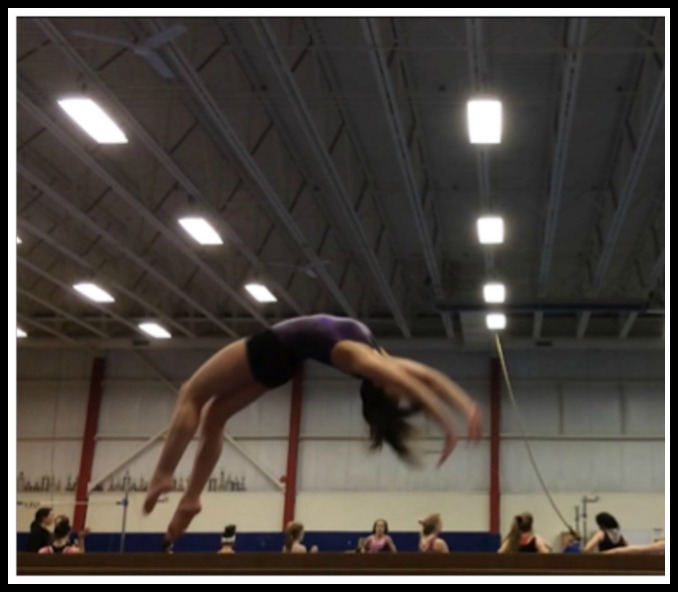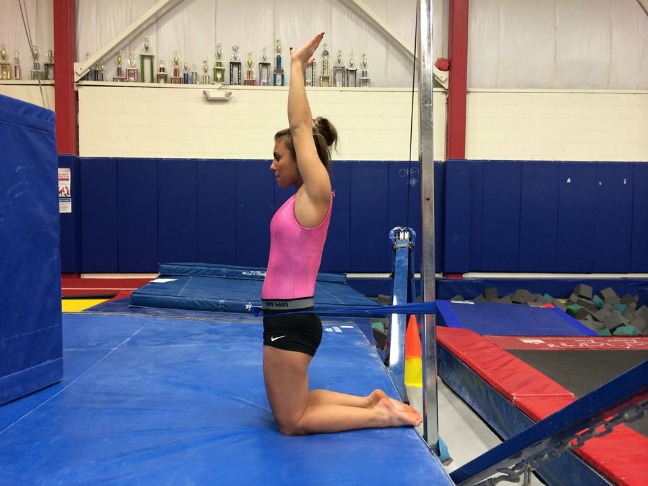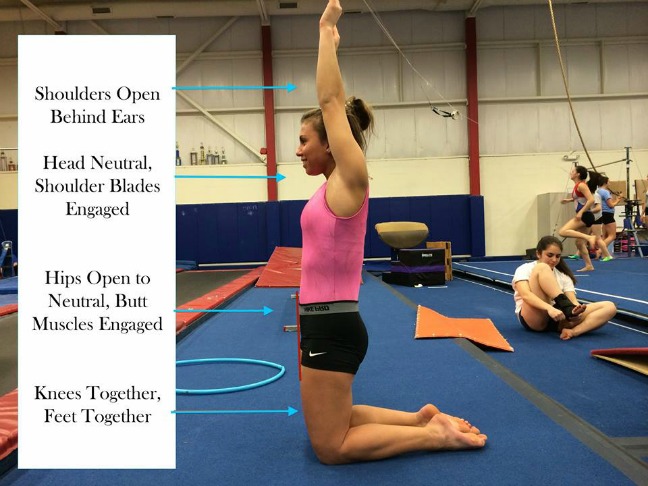Where are back injuries coming from and how do we avoid them?
Hi All,
This is the fourth installment from Dr. Dave Tilley, and this week we are talking specifically about back injuries. Be sure to check out installments one, two and three.
———————————————————————————————————————-
Blog Article: Video Quick Tips: Sparing Force To A Gymnasts Lumbar Spine
This is a really big area, as lower back pain in gymnasts can have different cause and origins. I think it’s by far the biggest concern in gymnastics along with lower leg injuries, as the core and spine are the base for everything we do. That being said, I have spent an incredible amount of time research and learning about lower back pain in gymnasts. I unfortunately have seen the physical/mental/emotional consequences both with my gymnastics patients in the clinic and also some of my own gymnasts earlier this year at my new job. I’ll include links to a lot of articles that I have written over the last year.
I tend to see two categories of lower back pain, one being a gymnast who is missing mobility somewhere (hips, middle back, shoulders) and is wrongly making up for it at their lower back. The other is a gymnast who has plenty of mobility and either lacks strength/control or simple doesn’t use it during gymnastics technique properly. The concept of overuse and monitoring exposure also goes for both of these, as the majority of lower back injuries in gymnastics are overtime and not one big event. I have a lot of working theories on how to reduce lower back injuries in gymnastics but to avoid making this a really long answer here are 10 tips I can offer coaches and gymnasts.
1) Make Intelligent Coaching/Training Decisions: Gymnastics is a tough sport with a lot of force, and these athletes are young/still developing. You have to always have lower back pain prevention on your radar whether you’re a coach or gymnast. Remember you can’t just go to Home Depot and get a new spine. They need their spine for the rest of their life and we have to be conscious about that as coaches. Some of the research numbers behind spine injuries in gymnasts after there career are both eye opening and scary. Not to mention, a gymnast with an injured back will never get to their full potential. You could have the greatest most talented gymnast at age 10 but if they fall apart with back problems they can never reach their goals.
2) Proactively Screen For Lower Back Injuries: Knowing the early signs and symptoms, when to rest, and when to get a medical evaluation are huge in preventing a bigger issue. The rule of thumb I’ve learned is that if an athlete has continued back pain for more than 3 days, or any serious signs, they should be evaluated by a medical professional to be safe. Dr. Josh Eldridge has a great algorithm people can use as a reference, and I have written some posts on my website about the screening tests I use with all of our girls.
3) Know Early Signs: As coaches we are in charge of our developing athletes. Knowing early signs like the gymnast constantly rubbing their back, trying to “loosen things up”, reoccurring nagging pains, and also more serious red flags is really important for early detection. Although I don’t recommend a coach ever try to diagnose someone, there are some good screening tests and signs you can use to look for, which I’ll include the link to below.
4) NEVER train Through Pain: I know we all want to be tough, but there is no benefit to being a hero and continuing to train through back pain. It will just continue to get worse and catch up with the gymnast, often times being much worse because of it. As a coach, it is our job to be supportive for this rather than encouraging them to keep training.
5) No Pain Doesn’t Equal No Problem: Off the point above, you have to be proactive and not reactive. Just because the gymnast doesn’t express pain doesn’t mean nothing is going on under the surface. I have had many patients who reported minimal pain for months, only to “all of a sudden” get pain and then the medical evaluation revealed something that has most likely developed over years, not days. Knowing this you have to be aware of it during training.



6) Get Full Hip/Middle Spine/Shoulder Mobility: Simply put, the more mobility you have in the hips to extend, and middle back/shoulders to get overhead the less possible force that may go through the lower back during skill work. Pre-hab work to address these issues and regular maintenance is huge because gymnastics puts these areas to constant use.
7) Teach The Gymnast to USE the Hip and Shoulder Mobility, on a Braced Core Foundation: Teaching about a proper core position and utilizing the shoulders/hips to dominate extending movements can deload the lower back quite a bit. I have had these technique lessons alone dramatically reduce discomfort felt with back walk overs, beam series, and so on.
8) Choose Your Strength/Conditioning Wisely: I hate to break this to gymnastics and coaches, but some of the “go to” exercises in gymnastics may have much more cons than pros. For example high repetition of arching strength (uppers, lowers, supermans, etc) can create quite the force load on your spine, with research from Stuart McGill measuring the force up to 1400lbs. There are other examples beyond this too. I believe that we absolutely have to train arch body positions, but the way we go about it is key for our gymnasts, especially in the younger levels. The last year of work has created some eye openers for me, and I have dramatically changed our approach to core training based off of a lot of research. There are many other great ways to go about training the core for it’s true function related to gymnastics that are out there.
9) Build In Regular Core Pre-Hab: This is kind of going off of everything above, but because of the scarily high rates of lower back pain in gymnastics we have to be vigilant about pre-hab if we want to make a dent in the injury rates. Regular core control, technique and progression work, and being educated about the issue is really important.
10) Work With Healthcare and Non The Non Gymnastics World: Being between the lines of coaching and healthcare I see how each side has is distinctive struggles related to gymnastics. There are tons of great health care professionals who would be more than willing to help out with the gymnastics population. I have learned a ton from non-gymnastics people in the last year by being open minded. My good friend Dave Picardy who runs a large training facility near me has taught me a ton about training, and his education has had a big influence on how I work with my gymnasts. He was actually the fuel behind why our girls are now doing summer weight lifting programs, which I’m a huge believer in. Reach out and be open to learn new things, it can have a huge effect for you gymnasts.
Blog Articles
Thoughts on Re-Thinking Core Training In Gymnastics
Screening Tests For Lower Back Pain In Gymnasts
Is Arch Up Type Conditioning Contributing To Back Pain In Gymnasts?
Just Because A Gymnast Doesn’t Have Pain, Doesn’t Mean There Isn’t A Problem
Video Example of A Gymnast’s “Tight Hamstrings” Really Being A Core Control Problem
I hope this interview has given some insight into some parts of my life working with gymnasts both in the gym training, in the clinic as patients, and also how I try to blend things together through the blog. I really enjoy being able to share the rehab/performance side of my life and my opinions on how I use it with my gymnasts. If anyone is interested in questions or wants to get in contact with me, they can through the website or through email at dave@hybridperspective.com
Thank you so much for reading! I greatly appreciate it and hope all the information can help people out.

1 Comment
[…] Part 4 – ” Where are back injuries coming from and how do we avoid them?” (https://swingbig.org/where-are-back-injuries-coming-from-and-how-do-we-avoid-them/) […]